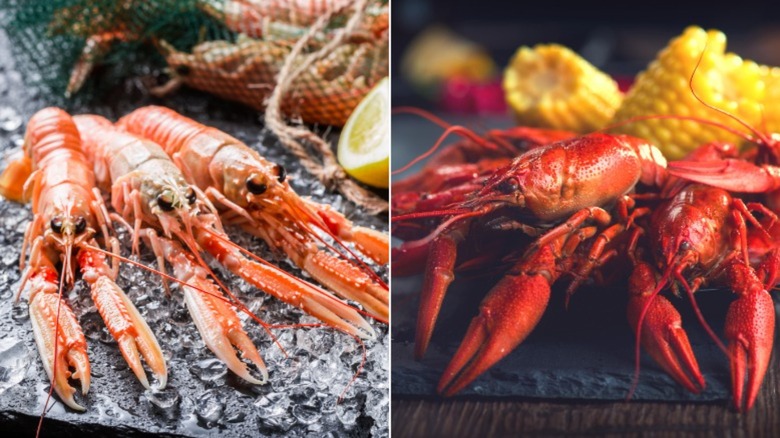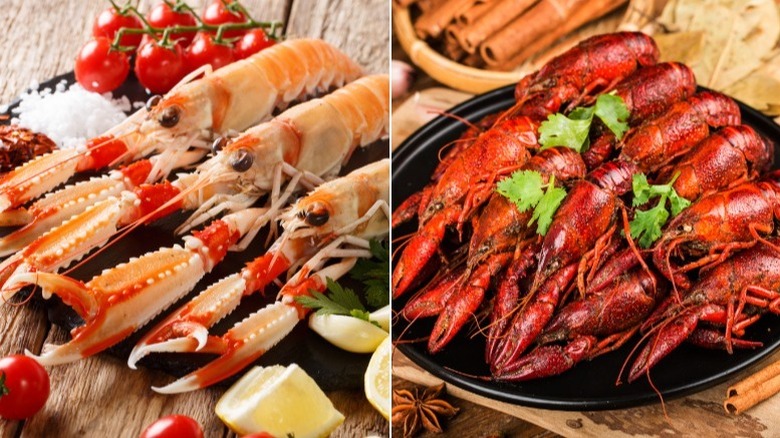The Real Difference Between Langoustines And Crawfish
The ocean is filled with delicious creatures. From lobsters to oysters to salmon, the oceans and rivers of the world are filled with a plethora of wonderful delights that diners are blessed to get to enjoy. When looking at the crustacean genus family, we encounter things like lobsters, crabs, crawfish, and langoustines. A Bon Appétit report refers to langoustines as "the new marker of haute cuisine" as it is popping up on the menu of upscale restaurants everywhere. Langoustines are partly more expensive due to how difficult it is to harvest them and get them to a dinner table.
The humble crawfish, on the other hand, are much easier to access and less finicky to catch, according to Field & Stream. Despite their appearance, langoustines and crawfish are not like lobsters and do not taste like lobsters either. They are also quite different from one another as well — from where they are found to how the meat tastes (via Bon Appétit).
How do langoustines and crawfish differ?
Langoustines can be found in the cold, frigid ocean waters of Norway, Scotland, and Iceland, according to Bon Appétit. The Atlantic Seafood Market explains that crawfish (also known as crayfish, yabbies, crawdads, and mudbugs) are found in freshwater rivers and lakes. Langoustines and crawfish vary greatly in size as well. Langoustines can grow up to 10 inches in length, while crawfish mature at a robust three inches (via Food Network and Atlantic Seafood Market).
Bon Appétit reports that meat found within langoustines is much sweeter when compared to other crustaceans. Sciencing backs this up with a report explaining how crustaceans found in colder waters have firmer meat that is whiter and sweeter. Crawfish, on the other hand, have meat that tastes like a combination of lobster and shrimp, according to Pioneer Woman. Although, if you ask Reddit user u/[deleted], crawfish don't taste like much unless they are seasoned.

